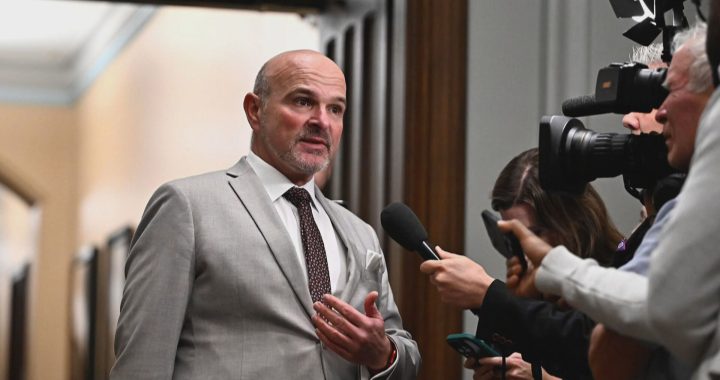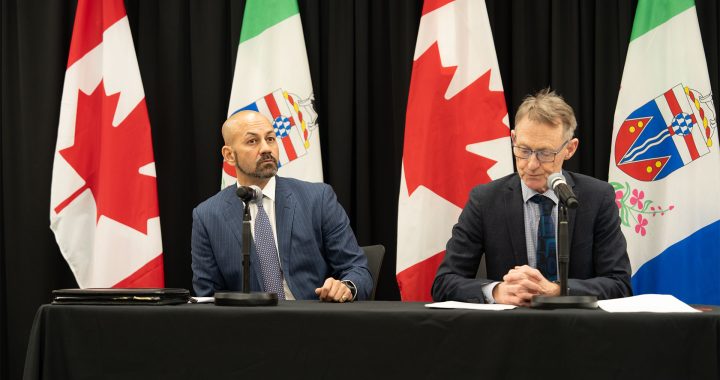For the past year Cameron Adams has spent his Fridays in an office at the University of Winnipeg developing a language app.
It’s a small room adorned with Indigenous art and memorabilia and has quickly become the most important room in the downtown campus for Adams.
The 19-year-old Indigenous studies major has been learning to speak Swampy Cree with the help of school Elder Margaret Osborne.
Now the two are creating a Cree language app.
The idea came after Adams began learning his Cree language two years ago.
“I enrolled in the Cree class here at the University of Winnipeg and became literate in Swampy Cree,” said Adams.
“Now I can read and write it. With that it drew into my passion for my language app.”
Adams’ family is from Norway House Cree Nation and Berens River First Nation, both in Manitoba.
It is estimated more than 96,000 people are fluent in Cree across Turtle Island.
According to a 2016 Statistics Canada report, Cree is one of the most frequently spoken Aboriginal languages. But access to the language is not always common for young people.
This is the driving force behind Adams’ decision to create the app.
“You don’t need to worry about if you can’t see a Cree speaker everyday…you can just go on your phone and say, ‘how do you I am hungry,” [or] ‘how do you say I am going outside?”
The app is in the preliminary stages of development. Adams is working with app developers in Saskatchewan to make his dreams a reality.
His app will include options broken down by categories such as colours, animals or food. Each word or phrase will have the English version, the Cree version and the Cree syllabics version, along with an audio component.
“We have all these words. We have all these things. We need to have a resource…so that people can talk about hockey and then go talk about the land and then go talking about on the water,” said Adams.
Osborne will be the voice of the app.
Starting next month Adams will record Osborne speaking the Cree language.
The process has helped Osborne, who is from Norway House Cree Nation, reconnect with her language.
“Our languages are more spiritually lead and the culture is there with it,” said Osborne. “That’s what culture is. [It] is the language, it’s who you are [and] where you come from.”
In 1969 Osborne said she suffered a childhood head injury, which resulted in bouts of amnesia. She had trouble remembering much of her first language. For the past 20 years she has been working at regaining that knowledge.
She said she doesn’t use dictionaries or language books. She relies on memory and learning from her late mother and siblings.
“[My daughter] said it’s in your blood,” said Osborne. “Elders will tell you it’s in your blood, your culture, it’s in you.”
“It’s just starting to live that’s why you’re remembering.”
Adams hopes to release the app in 2019.
It will include thousands of words and phrases from various Cree dialects.
He hopes to add more with the help of other Cree translators.
“Our language is always evolving and that’s what I want this app to do.”










I would be very interested in this app. Please let me know when it is available.
I would be interested in learning my language Cree
I would be very interested in this app. Please let me know when it is available.
I would be interested in learning my language Cree